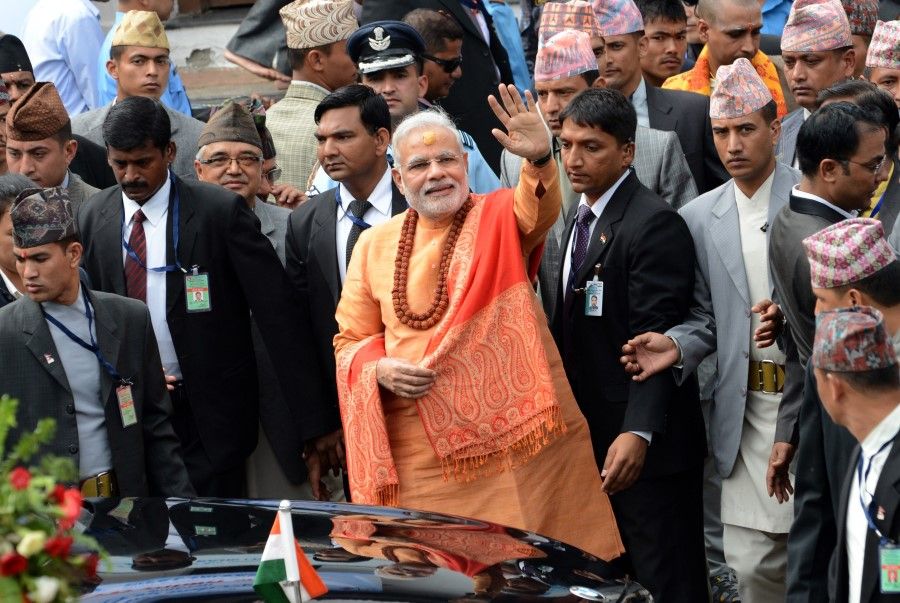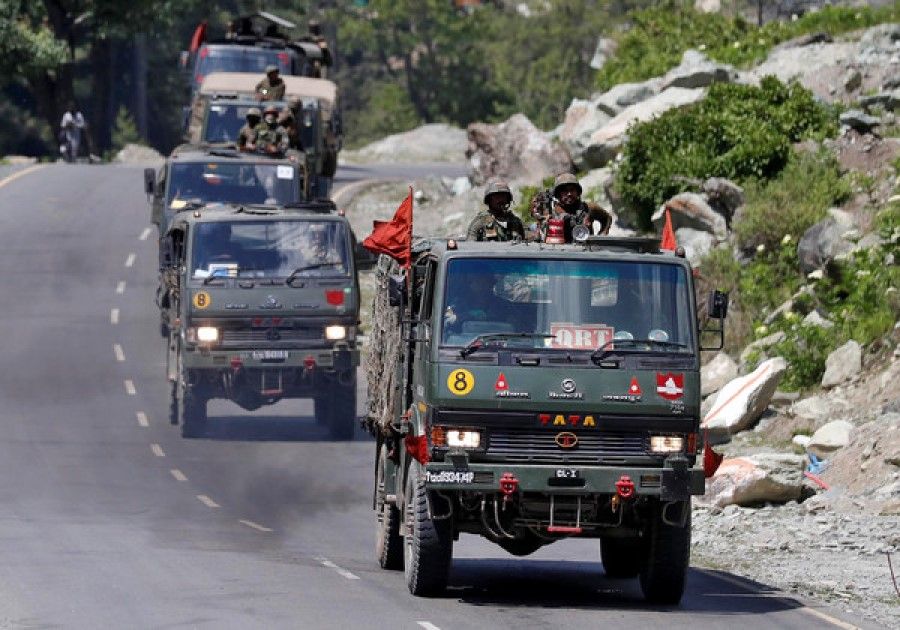Why India's influence over South Asia will continue to weaken

Since India's independence in 1947, its population and land size have allowed it to dominate its South Asian neighbours with their relatively backward economies and weaker military strength.
During the Indo-Pakistani War of 1971, India engineered separation and ultimately independence for Bangladesh from Pakistan; from then on, India was no longer caught between East and West Pakistan. After losing Bangladesh - previously East Pakistan - the new Pakistan saw a growing gap between India and itself, while India consolidated its dominance over South Asia following its independence.
In 1991, the Rao government began reforming the Indian economy, and India began to rise and stand out among the South Asian economies.
In the year before the Covid-19 pandemic, at one point India's GDP was fifth in the world, overtaking that of its previous coloniser, the UK. An even prouder achievement for India was that in terms of purchasing power parity, India's GDP was third in the world, which India's leaders were glad to speak of.
'Neighbourhood First' policy losing its lustre
Given India's clear edge over other South Asian countries, after Narendra Modi became prime minister in 2014, he embarked on a "Neighbourhood First" policy to further consolidate India's South Asian dominance, creating a conducive environment for it to become a world power. The leaders of other South Asian countries were present at his inauguration.
India under Modi did shine for a while, and its position as a leader in South Asia seemed to be unanimously accepted by other South Asian countries. Soon after taking office, Modi launched into "charm diplomacy" - the first country he visited as prime minister was what India considered its protectorate, Bhutan, and the second was Nepal. In fact, Modi visited Nepal twice in 2014, and Nepal-India relations were considered to be at a historic high at one point.

However, the "honeymoon" between India and South Asian countries such as Nepal quickly ended. In 2015, after Nepal's new constitution sparked unrest among the Madhesis in Nepal, India supported the Madhesis out of sympathy due to a shared ethnicity, and closed off Nepal's third-party trade channels within India. Nepal being a landlocked country, most third-party trade has to go through India.
The nearly nine-month closure brought Nepal's economy to the brink of collapse. And while Nepal gave in to India in the end, Nepal-India relations took a serious hit. In 2018, Modi again visited Nepal twice, but relations were only partially restored, while the sovereignty dispute that flared up in 2021 worsened the situation. On the other hand, China's relations with Nepal were steadily improving.
On 14 October 2021, Bhutan - which has a special relationship with both China and India - signed with China a memorandum of understanding on a "Three-Step Roadmap" for expediting Bhutan-China boundary negotiations. Although India still has influence on Bhutan's domestic governance and diplomacy, an important step was taken in China-Bhutan relations right before India's eyes.
Under India's influence, there have been a string of incidents with two of China's flagship projects in Sri Lanka - Colombo Port City and the Hambantota Port. In the case of the Colombo Port City project, in part due to pressure from India, Sri Lanka retracted its original proposal of allocating a 20-hectare site freehold to the Chinese project company and adjusted it to a 99-year lease instead. But both projects are now proceeding smoothly, and Hambantota Port will soon be operational. India has to accept China's vast economic influence in Sri Lanka.
India was well aware that with China's current strength and enormous growth potential, working with any other country than the US would not allow it to counter China.

India less seen as leader of the region
The SAARC was established in 1985, and is the most influential regional group in South Asia. In 2016, India objected to the South Asian Association for Regional Cooperation (SAARC) summit being held in Pakistan; since then, a summit has not been held. While the group still holds other activities, given that its authoritative summits have not resumed following the disruption, its influence has been seriously weakened.
In April 2021, the foreign ministers of China, Afghanistan, Pakistan, Nepal, Sri Lanka and Bangladesh held a video conference on handling the pandemic - India was invited, but declined. And in July 2021, China and the same five countries held a meeting in Chongqing on poverty alleviation and cooperative development.
Now that the SAARC is dead in all but name, the Modi government is seeking other channels. It has turned its focus on the Bay of Bengal Initiative for Multi-Sectoral Technical and Economic Cooperation (BIMSTEC), which has as its members Bangladesh, Bhutan, India, Nepal, Sri Lanka, Myanmar, and Thailand - but not Pakistan.
In 2018, Nepal did not participate in the first military exercise for BIMSTEC members held in India, but took part in another joint military exercise with China, Sagarmatha Friendship-2, held in Chengdu the very next day.
Busy courting the US
Given China's growing influence in South Asia, India - which has always seen South Asia as its backyard - would naturally not take things lying down. The Doklam standoff in 2017 and the Galwan Valley crisis of 2020 has made India very insecure about its national security.
Amid grievances old and new with China and domestically, and in the context of growing strategic competition between China and the US, India knew that it could not stand up to China on its own, and started to turn towards the US. India was well aware that with China's current strength and enormous growth potential, working with any other country than the US would not allow it to counter China.

Given India's attempt to use the US to counter China, it would have to invite the US into South Asia and the Indo-Pacific region. But considering the US's strength as a superpower and rich diplomatic experience, once it gets deeper into these regions, India's influence will definitely weaken further, and when that happens, given India's current and foreseeable strength and means, it would be as good as impossible for it to squeeze US influence back out of the region.
No matter which country India works with, its dominance of South Asia will be weakened.
Just not strong enough
Since 1991, India has indeed made great economic achievements. However, the gap between India and the more rapidly developing China and the US is growing, in relative and absolute terms. One is located in the same Asia region like India, while the other is the most powerful country in the world. No matter which country India works with, its dominance of South Asia will be weakened.
Other South Asian countries have been suffering under India's long dominance, and now that there is an opportunity to work with countries outside of the region to counter India, naturally, they would not let the chance slip by.
India is located in a region with a naturally favourable environment, where there are practically no powers around it. However, the ambitious Modi government finds itself in a time where India is just not strong enough. Bricks cannot be made without straw; no matter the Modi government's diplomatic skill, it will not change the reality of India's weakening dominance over South Asia.
. . . . . .
This article was updated on 21 March 2022.
Related: Quad now centrepiece in India's China strategy | With China's increasing assertiveness, India's active role in the Indian Ocean matters more than ever | China in the Gulf: India overmatched but undaunted | AUKUS and Quad do not solve India's regional security problems | China has a long-term strategy in Southeast Asia. But what about India? | India warms up to the US amid 'new cold' in India-China relations
